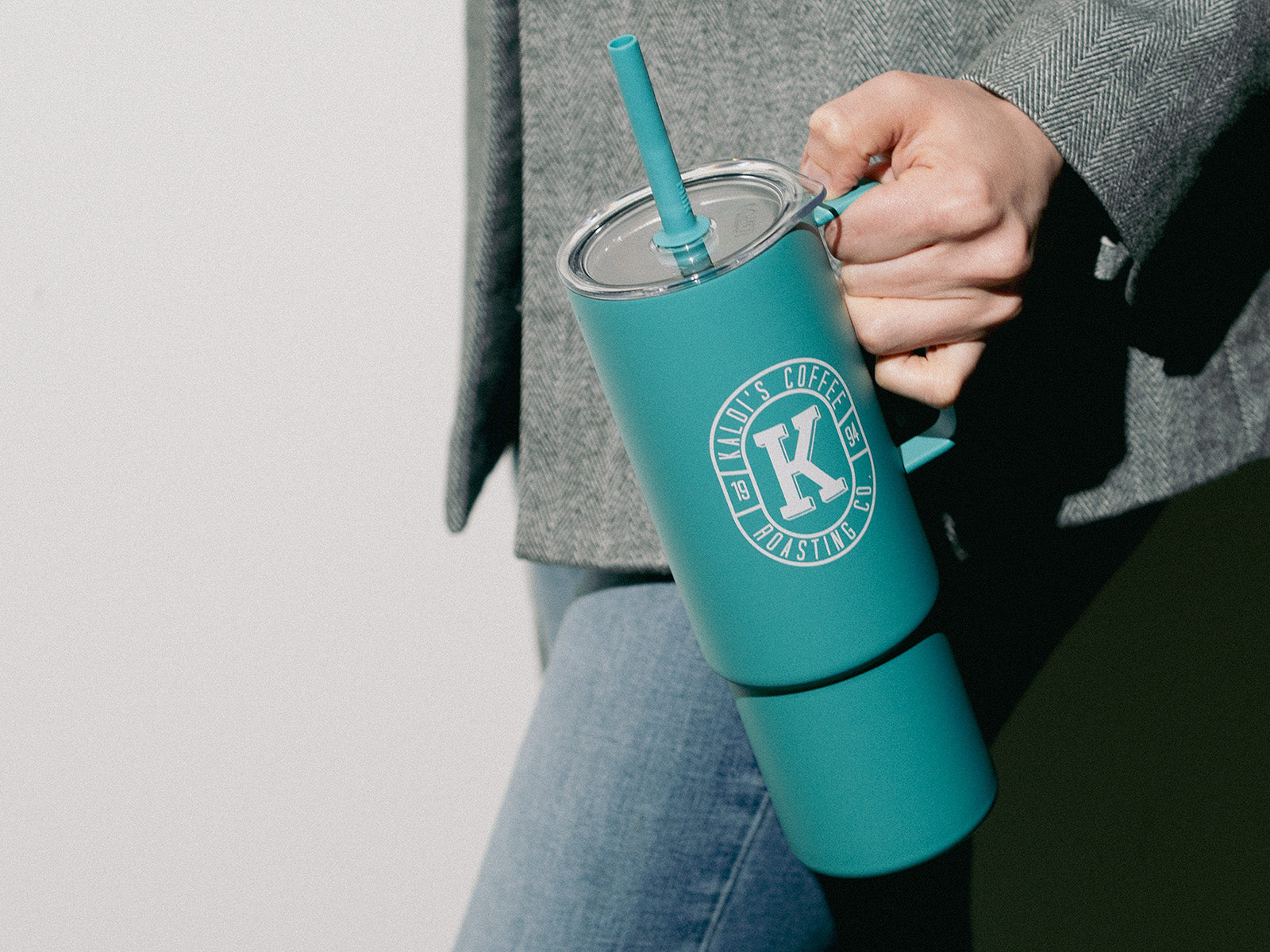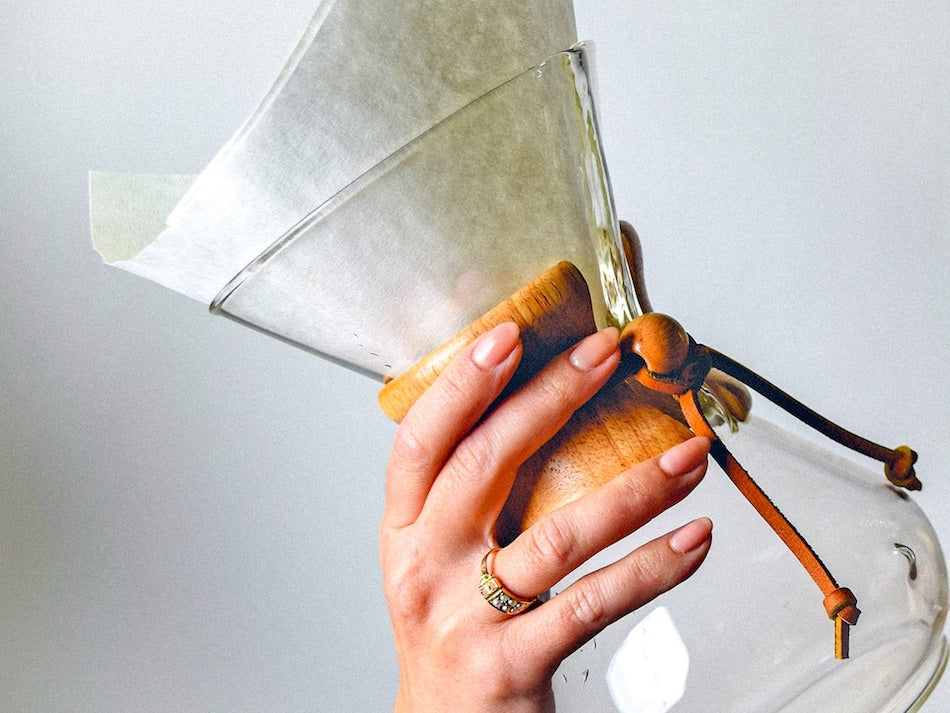SUMMARY
A hand grinder may be one of the cheapest ways to increase the quality of your at-home coffee, and modern hand grinders are incredible. If you are considering one, you need to know what brands to trust and what style of coffee you like the most.
Why Hand Grinders Have a Bad Rap
I hear it all the time: “A hand grinder? Ew.”
If you came into coffee during a certain era — say, the early 2010s — that reaction makes perfect sense. Early hand grinders were made from ceramic burrs (not known for great consistency or ease of grinding) and had terrible stabilization, leading to massive chunks and lots of boulders. I know this from personal experience. My first grinder purchase was a ceramic milled grinder from around 2010 or 2011, and it was awful.
Early hand grinders had terrible ergonomics. You put your life into grinding for 4-5 minutes, holding the grinder in any configuration to lessen the burn in your arms, taking breaks along the way. And what did all this effort get you? A muddy, inconsistent brew. I still remember sitting down, placing the grinder between my legs to stabilize it, and cranking away. They were hard to hold, had short handles, and few if any ball bearings to ease the grind.
But weirdly, in my personal experience, the coffee kind of tasted better… maybe because I had a sort of physical connection to it, in a weird way.
It was rational to give up on them then. But...

Few pieces of coffee gear have seen such a rapid and revolutionary leap in quality as hand grinders. Hand grinders are now exceptionally well machined, thoughtfully constructed, intuitive, and long-lasting pieces of kit. They still aren’t for everyone, but chances are if you hear a negative reaction to hand-grinding, it came from experiences in the early era of specialty.
This blog is my chance to:
-
convince you that a hand grinder might actually be for you,
-
help you respect them, even if you never ever want one, and
-
guide you through some of the best hand grinders on the market today (honestly, it’s a complete mess out there)
SECTIONS:
-
How Hand Grinders Have Evolved
-
The Hand Grinders I have owned (my hand grinder journey)
-
Why Hand Grinders are better for filter coffee
-
What my Hand Grinder journey has taught me about coffee
-
What are some benefits of hand grinding coffee?
-
Which Hand Grinder is for you?
-
Buyer-Beware: A Hand Grinder word of caution
- Conclusion: It May Be Your Time to Hand Grind

How Hand Grinders Have Evolved
With some exceptions, the innovation seen in hand grinders is unmatched in the world of coffee gear. I remember dreaming of a flat burr hand grinder in 2017. In 2025, there are now a few options (Pietro & Cafesing Orca to name a couple). New burr geometries (i.e. the shape and grooves), new burr sizes, new adjustment mechanisms, and more have found their way into hand grinder releases, all while prices have plunged.
HOW HAND GRINDERS HAVE IMPROVED
-
Improved burrs
-
Steel / Hardened burrs with ever-evolving configurations and geometries (see the new pineapple burrs from Millab (link) or the “heptagonal” burrs popularized by Commandante)
-
External adjustment systems
-
These allow for better tracking (1Zpresso was huge in pushing this to the mainstream) vs. unmarked click-wheels under the grinder

Example of the external grind adjustment system on hand grinders
-
Improved materials
-
High quality burrs and completely plastic-free builds (see the 1ZPresso K-Ultra). Some newer grinders are practically engineering marvels
-
Ease of grinding
-
With the improved burrs and sets of ball bearings, most higher end grinders can go through your dose in 30-40 seconds
-
More affordable
-
Some GREAT hand grinders are less than $100 (Kingrinder, 1Zpresso)
-
More burr variety
-
Now several models that include FLAT burrs, which was always a dream of mine (to vastly simplify things, flat burrs give more flavor clarity)
 Improvements in materials and engineering have made modern hand grinders a breeze
Improvements in materials and engineering have made modern hand grinders a breeze
The Hand grinders I have owned (my hand grinder journey)
I’ll admit to being a bit of a collector of coffee gear… over the course of time, these are the hand grinders I have used and owned.
(Quick note: The Commandante is one of, if not the most, famous hand grinders. It is not listed here because I have never used one.)
Hario Skerton

My first hand grinder, and the one that most coffee veterans think of when they consider the cons of hand grinding. This grinder is well past its prime — especially with excellent modern hand grinders like the 1Zpresso Q Air available at nearly the same price.

You can see all of the reasons not to get this grinder in my other grinder post, Coffee Grinder Buying Guide.
Read Now: Coffee Grinder Buying Guide
Orphan Espresso Lido 2 (link to Lido 3)
 Image of my Lido 2 I took right when I got it
Image of my Lido 2 I took right when I got it
My first love that revolutionized my taste in coffee. Some of my most memorable cups still harken back to coffee made with this grinder (I still dream about you, Natural Sudan Rume). This could be because I was early in my journey, or because I took more time to dial in back then. The Lido series is big, beefy, and built to last, and Barb and Doug from Orphan Espresso are easy to root for and love focusing on making coffee without electricity.
Alas, I no longer have my Lido 2. I sold this grinder once I got my Fellow Ode with SSP Multipurpose Brew burrs, which was my next great leap forward with coffee brewing quality. I still miss it to this day - it practically felt like an heirloom item, such was my strong emotion towards it.
PROS:
-
Great consistency
-
Robust and built to last
-
Can grind a lot of coffee (big chamber and catch cup)
CONS:
-
Huge and heavy
-
Grind adjustment: Not totally easy to see where your grind is, but you get used to it
Helor 101 (dual burrs) - now from Option O

This grinder was one of my first splurges in the world of coffee (that I still feel guilty about 6 or 7 years later). Comments in forums promised a EK-like grind, but that didn’t hold up. Points should be given to this grinder for being innovative early - burrs could be swapped between an espresso-first and filter-first set. The espresso set greatly eased the grinding process and helped me get into home espresso for the first time. Ultimately, I could never get behind the taste profile that always seemed to be lacking behind my Lido.
PROS:
-
Constructed well
-
Dual burr system for filter and espresso
-
Sleek and modern design
CONS:
-
Odd alignment system
-
Mid-level flavor profile
-
Internal grind adjustment, making it hard to track
-
Expensive
Made by Knock Aergrind (Kickstarter backed)
I did not have this one very long, but it was one of the first, to my knowledge, to combine the new age of hand grinders with the ability to fit inside an Aeropress plunger. The Porlex Mini did this first, but the Aergrind upped the quality quite a bit.
In the end, the cup quality was fine but my Lido 2 was better. It was a very interesting entry that I believe helped push the modal improvements forward for hand grinding.
PROS:
-
Small form factor is great for travel
-
Decent grind consistency
-
External adjustment system
CONS:
-
Mid-level flavor profile
-
Not the easiest to grind
1ZPresso Q (link)

I left the world of hand grinders for a while and came back when I saw this. This grinder has internal adjustment, but the premium feel of the materials, heptagonal burrs, travel-ready size, and very low price point lured me to it. It makes very good coffee for the size and price, and it felt like something I should get as part of my travel coffee kit. I still use this when I travel as it fits inside my Aeropress.
PROS:
-
Fits inside the plunger of the Aeropress

-
High quality grind with heptagonal burrs
-
Metal construction (in the standard version; there is also an “air” version made of plastics with fun colors)
-
Very, very affordable with exceptional quality for its price
CONS:
-
Internal adjustment
-
Can only grind ~20 grams at a time (small!)
1ZPresso K-Ultra (link)

I actually bought this grinder to review in my original grinder blog. Suffice to say, I quickly learned what the fuss has been about. The external adjustment system is world-class. It’s incredibly easy to see where your grind is and the “click” you feel is intuitive and helpful. The grinding process feels buttery smooth, even when tackling lighter roasts and larger batches. It feels great in the hands - both hands - as the grip around the body gives you a strong handle and the wood knob fits comfortably in the palm. This grinder is excellent, and it is currently my #1 recommendation for hand grinders $150 and up (all the way up!).
PROS
-
Can do espresso all the way up to French Press
-
Very sturdy grinder, high quality for any brew style
-
A great balance of sweetness and clarity; basically a perfect all-rounder for your morning cup
-
Very sturdy, grinds with ease
-
Simply one of the best quality hand grinders on the market with a non-luxury price
CONS:
-
Very much worth the price, but could be considered expensive ($200+)
-
Magnetic catch cup is a bit of a personal taste; it’s strong, but I have knocked it off accidentally, spilling my coffee grounds everywhere
-
Bigger size means it’s not totally travel-friendly
1ZPresso ZP6

The 1ZPresso ZP6 became legendary over time for its flavor clarity. Fun fact, the ZP6 came back from discontinuation because coffee geeks clamored for its taste profile that was initially determined to be too “tea-like” for the masses. It has all the same great trimmings as the K-Ultra, but a different burr set that is solely for filter coffee.
PROS:
-
Great construction and quality materials
-
External adjustment
-
Affordable for the flavor profile it gives
CONS:
-
Can only be purchased direct through 1ZPresso
-
No magnetic catch up
-
Not for espresso; it cannot grind fine enough
Why Hand Grinders are better for filter coffee (for the majority of people)
Grinding fine means grinding more and grinding harder.

Let's elaborate on that. With hand grinders, filter grinding is a breeze compared to espresso grinding. It might take 30 seconds to grind for pour-over, but over a minute to grind your 20 gram espresso shot, and those extra seconds and that extra effort ends up meaning a lot.
Example: when making espresso, it can feel extremely defeating to spend over 1 minute on a grind that ends up choking your machine or spurting out like an upside down volcano. And sometimes, it takes 3 or 4 shots to really dial in your espresso, turning your morning routine into a long chore. Pour-over and filter coffee is more forgiving and takes less effort.
Otherwise, if you have the time and patience, hand grinders are more than capable of delivering incredible quality from your espresso (if the grinder is made for both. The ZP6 literally cannot do espresso grinds).
 The 1ZPresso catch cup fits neatly inside a 58mm basket for easy transfer
The 1ZPresso catch cup fits neatly inside a 58mm basket for easy transfer
What my hand grinder journey has taught me about coffee
-
The grinder is just one part of coffee quality, but a big one.
-
Your first high quality grinder will probably result in the biggest quality increase in your home coffee. But after that, the results diminish, and other things like water quality and technique become more important (and buying great coffee!).
-
-
The shape of a burr really does impact the flavor of a coffee.
-
And your grinder can teach you a lot about your taste preferences (do you like more body? More clarity? Somewhere in between?)
-
-
A hand grinder can teach you about the density of a coffee (i.e. how hard it is to grind).
-
This gives you haptic feedback to one more variable of brewing. For instance, denser, lighter roasts may need hotter water.
-

What are some benefits of hand grinding coffee?
Nothing replaces the convenience of a machine grinding your coffee for you. However, hand grinders have some unique advantages to consider.
-
More bang for buck (and fewer things that can break)
-
No motor means you’re just paying for great burrs and great construction. A $200 hand grinder may give you just as good of a cup as a $600 electric grinder
-
-
Low RPM, i.e. how many turns you complete in a set amount of time
-
Most people grind somewhere around 100 rpm when hand-grinding, give or take.
-
This is MUCH slower than most electric grinders, which can go anywhere from 300rpm to over 1500
-
The science is still out, but the general consensus is that this lower rpm results in fewer fines from conical burrs. This generally means a “cleaner” cup where you can taste the flavors of the coffee better
-
-
Low retention, i.e. how much coffee is left in the grinder when you’re done
-
The vast majority of the time that I use a hand grinder, whatever I put in, I get out. Example: I weigh 15.4 grams of coffee, I get 15.4 grams of coffee when I transfer to my brewer.
-
This is not true of a lot of electric grinders, who have gone to great lengths by adding in bellows or even a water spritzer to limit the amount of coffee remaining after grinding.
-
 Generally, whatever you put in a hand grinder, you get out
Generally, whatever you put in a hand grinder, you get outWhat hand grinder is for you?
This is definitely not an exhaustive list. These grinders are the ones I have used or have done research on, and are just my opinion.
Budget Conscious (high bang for buck)
-
1Zpresso Q / QAir
-
Honorable mention: Timemore C2

The Timemore hand grinder is affordable and yields full-tasting cups
Best for espresso and filter
-
1Zpresso K Ultra
-
Lido 3
Best for filter only
-
1Zpresso ZP6
Best Quality, for a higher price
-
Pietro (flat burr grinder)
-
Kinu series
-
Lido Series
-
Commandante
Buyer-Beware: A Hand grinder word of caution
With the popularity of hand grinders soaring in the last few years, many opportunists have filled the space with low quality knock offs. A simple Amazon search shows an incredible number of names, both pronounceable and completely incoherent. This is wild for a person like me, who came of age when there were basically three hand grinders on the market.
Hand grinder companies are hardly household names, so I hope this guide can also serve you as a list of trustworthy, reputable brands. Those brands, just to say them, are listed below.
TRUSTWORTHY HAND GRINDERS INCLUDE:
-
1ZPresso
-
MHW3-Bomber
-
Kingrinder
-
Timemore
-
Pietro
-
Orphan Espresso (Lido Series)
-
Commandante
-
Kinu
-
Millab (owned by Timemore)
Conclusion: Hand Grinders Have Opened Up the World of Specialty Coffee to All. It May Be Your Time to Buy One.

Watching the growth of hand grinders next to the growth of specialty coffee has been fascinating. As interest in specialty coffee has increased, the amount of high quality gear has also increased while the barriers to entry (in this case, mainly cost) have decreased.
My belief is that hand grinders deserve a lot of respect for making speciality coffee more accessible to the masses. And, as more passionate, creative coffee people have entered the mix, the gear has gotten better, more intuitive, and more innovative.
Hand grinding isn’t bad! For many, it has become a part of the tactile ritual of making coffee, another way for the human hand to enter the process of bringing this incredible plant into your cup. And, with all the wide options and continual improvements, it may be time to bring one of these well-crafted machines into your process of realizing the incredible potential of your bag of coffee. After all, that's what we're truly here for.







